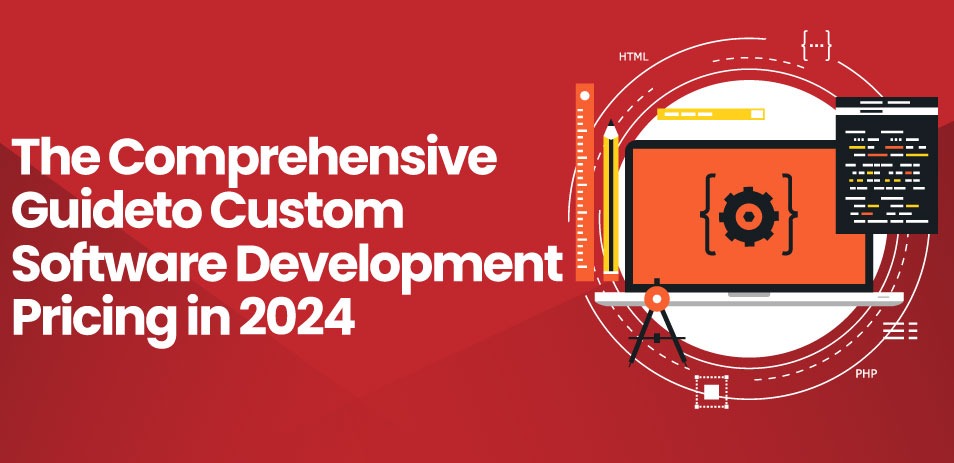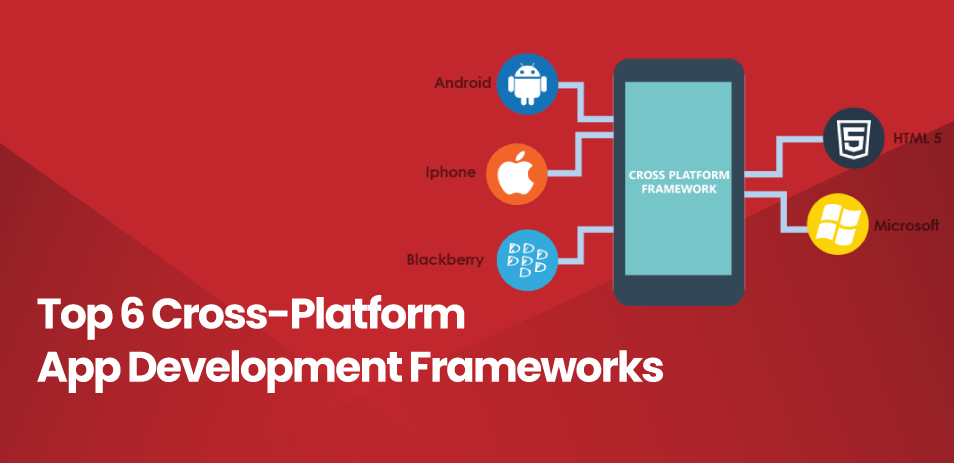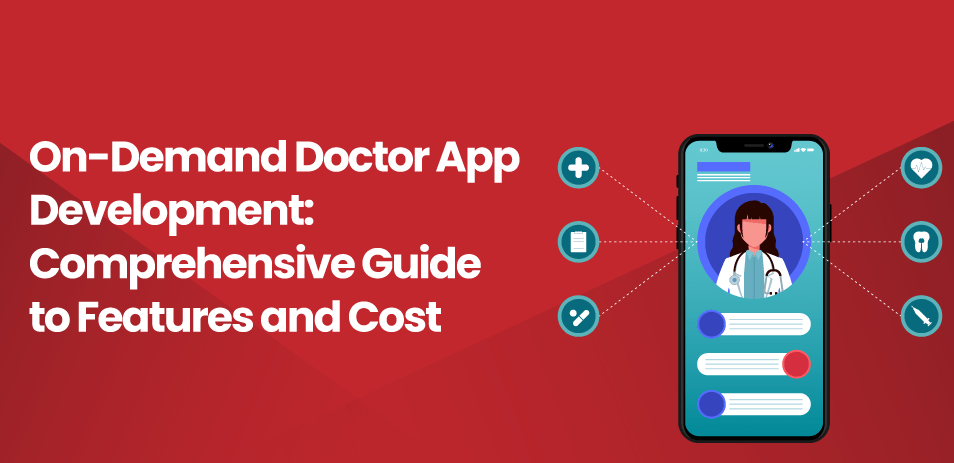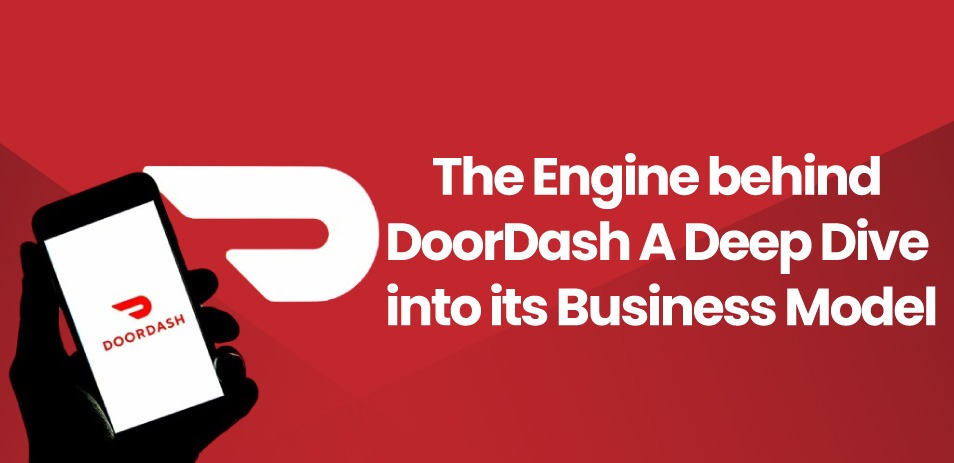Custom software development involves creating software applications tailored to the unique needs and requirements of a specific organization or user. Unlike off-the-shelf software, which offers generic features to meet broad market demands, custom software is designed to solve particular challenges or optimize specific processes within an organization. This bespoke approach ensures that the software aligns perfectly with the business goals, operational workflow, and user expectations.
The purpose of this guide is to delve into the various factors that influence the cost of custom software development. From the complexity of the project to the choice of technology stack, and from the composition of the development team to geographical considerations, several variables play a significant role in determining the overall expenditure. When you hire custom software developers, these factors become crucial in planning and budgeting for the project.
Types of Custom Software
Custom software development spans a wide range of applications, each serving different purposes and industries. Some common types include:
| Type of Custom Software | Description | Common Use Cases |
|---|---|---|
| Enterprise Resource Planning (ERP) | Integrates core business processes, including finance, HR, manufacturing, and supply chain. | Large organizations needing streamlined operations. |
| Customer Relationship Management (CRM) | Manages interactions with current and potential customers, focusing on sales, marketing, and service. | Businesses aiming to improve customer engagement. |
| Content Management System (CMS) | Facilitates the creation, management, and modification of digital content. | Websites, blogs, and online publications. |
| Supply Chain Management (SCM) | Oversees the flow of goods, data, and finances related to a product or service from origin to consumer. | Manufacturing, logistics, and retail. |
| Human Resource Management (HRM) | Automates HR processes like recruitment, payroll, performance evaluation, and employee management. | Companies looking to streamline HR activities. |
| Project Management Software | Assists in planning, organizing, and managing resources and tasks to achieve project goals. | Businesses managing multiple projects simultaneously. |
| E-commerce Platforms | Enables buying and selling of goods and services online, including inventory management and payment processing. | Online retailers and marketplaces. |
| Financial Management Software | Manages financial operations such as accounting, billing, invoicing, and reporting. | Businesses requiring precise financial tracking. |
| Healthcare Management Software | Manages patient records, appointments, billing, and other healthcare processes. | Hospitals, clinics, and healthcare providers. |
| Educational Software | Supports learning and teaching processes, including e-learning platforms and school management systems. | Educational institutions and training organizations. |
| Custom Mobile Applications | Tailored mobile apps designed for specific business needs or consumer use. | Any industry needing mobile solutions. |
| Business Intelligence (BI) Tools | Analyzes data to support decision-making, including reporting and data visualization. | Companies seeking data-driven insights. |
| Inventory Management Software | Tracks and manages inventory levels, orders, sales, and deliveries. | Retailers, warehouses, and manufacturing units. |
| Workflow Automation Software | Automates repetitive tasks and processes to improve efficiency. | Any industry looking to optimize operations. |
| Custom APIs | Interfaces that allow different software systems to communicate and exchange data. | Businesses needing to integrate disparate systems. |
| Banking and Finance Software | Manages transactions, investments, loans, and compliance for financial institutions. | Banks, credit unions, and financial service companies. |
7 Benefits of Custom Software Development
Tailored Solutions
Custom software is specifically designed to meet the unique needs of your business. This ensures that all functionalities and features are aligned with your operational requirements and goals. Unlike off-the-shelf software, which often requires businesses to adapt their processes, custom software adapts to you, leading to increased efficiency and effectiveness.
Scalability
Custom software is built with scalability in mind, allowing it to grow and evolve alongside your business. As your organization expands or changes, your software can be easily updated or modified to accommodate new requirements, ensuring long-term usability and relevance without the need for a complete overhaul.
Integration with Existing Systems
Businesses often use a variety of software tools and systems to manage different aspects of their operations. Custom software can be designed to seamlessly integrate with your existing systems, ensuring smooth data flow and enhancing overall operational efficiency. This integration minimizes disruptions and eliminates the need for manual data entry and reconciliations.
Enhanced Security
Security is a major concern for businesses, especially when dealing with sensitive data. Custom software offers enhanced security features tailored to your specific needs. Unlike generic software, which can be more vulnerable to widespread attacks, custom solutions are less attractive targets for hackers due to their unique and proprietary nature. This reduces the risk of data breaches and other security threats.
Competitive Advantage
Custom software can provide a significant competitive edge by delivering unique features and functionalities that off-the-shelf solutions cannot offer. By addressing specific business challenges and improving operational efficiency, custom software helps you stay ahead of competitors who may be using more generic solutions.
Cost Efficiency in the Long Run
While the initial investment in custom software development may be higher than purchasing off-the-shelf solutions, it can be more cost-effective in the long run. Custom software eliminates the need for recurring licensing fees and reduces the costs associated with workarounds and inefficiencies inherent in generic software. Moreover, tailored maintenance and support ensure that issues are resolved promptly, minimizing downtime and productivity losses.
Support and Maintenance
With custom software, you receive dedicated support and maintenance from the development team. This ensures that any issues or bugs are addressed quickly and effectively, and that the software remains up-to-date with the latest technological advancements and security protocols. The personalized support ensures that your software continuously meets your business needs, enhancing reliability and performance.
Ready to take your business to the next level with custom software solutions?
Contact us today to discuss your project and discover how we can turn your vision into reality.
Yes Let’s goKey Factors Influencing Custom Software Development Costs
Scope and Complexity of the Project
Features and Functionalities
The breadth and depth of the features you require directly affect the cost of development. Simple applications with basic features such as a login system, user profiles, and basic data processing are less costly compared to complex applications that require advanced functionalities like real-time data analytics, artificial intelligence integration, or robust security measures. Each additional feature increases the development time, resource allocation, and ultimately the cost.
User Roles and Permissions
The complexity of user roles and permissions also plays a significant role in cost determination. Software that must support multiple user roles, each with distinct permissions and access levels, requires a more intricate design and robust development process. This increases both the time needed for coding and the extensive testing required to ensure security and proper functionality for each user role.
Development Team Composition
Roles: Project Manager, Developers, Designers, QA Testers, etc.
A typical software development project involves a diverse team of professionals, including project managers who oversee the project, front-end and back-end developers who build the software, UX/UI designers who ensure it’s user-friendly, and QA testers who ensure the software is bug-free. The cost is influenced by the number of team members and their specific roles. More complex projects may require additional specialists such as business analysts, data scientists, and security experts, further increasing the cost.
Experience and Expertise
The skill level and expertise of the development team are critical factors in the overall cost. Highly experienced developers and designers typically command higher rates but bring valuable expertise that can lead to a more efficient development process and a higher quality product. Investing in a skilled team can be cost-effective in the long run as it reduces the likelihood of costly mistakes and delays.
Technology Stack
Front-End and Back-End Technologies
The choice of technology stack has a direct impact on the cost of development. Technologies such as React, Angular, or Vue.js for front-end development, and Node.js, Django, or Ruby on Rails for back-end development come with different cost implications based on their complexity, performance, and the availability of skilled developers. Some technologies are more expensive due to their advanced features or the specialized knowledge required to use them effectively.
Licensing Costs for Specific Tools or Frameworks
Certain tools and frameworks used in development may come with licensing fees. For example, enterprise-level databases, premium APIs, and specific development tools might require paid licenses. These costs need to be factored into the overall budget, especially if the project relies on multiple licensed technologies.
Project Timeline
Agile vs. Waterfall Methodologies
The chosen development methodology can influence the cost. Agile methodology, which focuses on iterative development and continuous feedback, allows for flexibility and adjustments throughout the project. This can help in managing costs more effectively but may also lead to changes that increase the scope and cost. Waterfall methodology, on the other hand, is more rigid with a defined structure and timeline, potentially making costs more predictable but less flexible in accommodating changes.
Time Constraints and Deadlines
Projects with tight deadlines often require additional resources, including overtime work and a larger development team, to meet the time constraints. This urgency can significantly drive up costs. Conversely, projects with more relaxed timelines can be managed more efficiently, potentially reducing costs through better planning and phased delivery.
Geographical Location
Cost Differences by Region
The location of your development team plays a significant role in determining costs. Development rates vary greatly across different regions. For example, hiring developers in North America or Western Europe is typically more expensive compared to Eastern Europe, Asia, or South America. These regional cost differences are due to varying living costs, economic conditions, and availability of skilled labor.
Offshore vs. Onshore Development
Offshoring development to countries with lower labor costs can offer significant savings. However, it comes with potential challenges such as communication barriers, time zone differences, and cultural differences that can affect project management and quality. Onshore development, while more costly, often provides better alignment with business goals, easier communication, and higher quality control.
Post-Development Costs
Maintenance and Support
Post-development costs are an essential consideration. Software requires ongoing maintenance to fix bugs, improve performance, and ensure compatibility with new operating systems or technologies. Support services are also crucial to address user issues and ensure the software continues to function smoothly. These costs can be significant over the software’s lifespan and should be included in the overall budget.
Updates and Upgrades
As technology evolves and business needs change, software will require updates and upgrades to stay relevant and efficient. This includes adding new features, enhancing existing ones, and ensuring security measures are up-to-date. Regular updates are necessary to keep the software competitive and functional, and these activities incur additional costs over time.
Detailed Cost Breakdown
Understanding the cost structure of custom software development is crucial for effective budgeting and project management. Below is a detailed breakdown of the various stages involved in custom software development and the associated costs.
Planning and Analysis
Requirements Gathering
The first step involves collecting and documenting the specific requirements of the software. This includes meetings with stakeholders to understand their needs, creating detailed requirement specifications, and setting clear objectives for the project. The cost for this phase depends on the complexity of the requirements and the time spent on stakeholder engagement.
Feasibility Study
A feasibility study assesses the technical and economic viability of the project. It involves analyzing whether the proposed software solution can be built within the given constraints (budget, time, technology) and if it will provide the expected benefits. Costs here include the time spent by analysts and technical experts to evaluate various aspects such as technical challenges, market needs, and risk factors.
Design
UX/UI Design
The design phase focuses on creating a user-friendly and visually appealing interface. UX (User Experience) design involves understanding user behaviors and crafting a layout that provides a seamless user experience. UI (User Interface) design focuses on the look and feel of the application. Costs include time spent by designers on wireframes, mockups, and user interface designs.
Prototyping
Prototyping involves creating an interactive model of the software to visualize the end product. This allows stakeholders to provide feedback before development begins. The cost for prototyping is determined by the complexity of the prototype and the number of iterations required based on user feedback.
Development
Front-End Development
Front-end development involves building the client-side of the application that users interact with. This includes coding in languages like HTML, CSS, and JavaScript, and using frameworks such as React, Angular, or Vue.js. Costs here are influenced by the complexity of the user interface and the responsiveness of the design across different devices.
Back-End Development
Back-end development covers the server-side of the application, including the creation of APIs, server logic, and integration with databases. This phase involves programming in languages such as Java, Python, Ruby, or PHP, and using frameworks like Django, Flask, or Node.js. The cost is driven by the complexity of business logic, the need for third-party integrations, and security considerations.
Database Design and Integration
Designing the database involves setting up the data structure that supports the software’s functionality. This includes selecting the appropriate database technology (SQL vs. NoSQL), designing data models, and ensuring efficient data storage and retrieval. Integration costs depend on the complexity of data relationships and the volume of data to be managed.
Testing
Unit Testing
Unit testing involves testing individual components of the software to ensure they work correctly. Each unit or module is tested in isolation. Costs are related to the time testers spend creating and executing test cases.
Integration Testing
Integration testing focuses on ensuring that different modules or services within the software work together as expected. This phase identifies interface defects between integrated units. Costs include the effort spent by testers to develop integration tests and the complexity of module interactions.
User Acceptance Testing (UAT)
UAT is the final phase of testing where the software is tested in a real-world scenario by the end users. This ensures that the software meets business requirements and is ready for deployment. Costs here are related to the coordination with end users, setting up the test environment, and managing feedback and revisions.
Deployment
Cloud Services vs. On-Premises
The deployment phase involves making the software available for use. Costs vary depending on whether the software is deployed on cloud services (like AWS, Azure, or Google Cloud) or on-premises servers. Cloud services often have ongoing subscription fees but can be more scalable and easier to manage, while on-premises solutions involve higher initial setup costs and ongoing maintenance.
Security Measures
Implementing security measures is crucial to protect the software from threats and vulnerabilities. This includes setting up firewalls, encryption, secure coding practices, and regular security audits. Security costs are determined by the level of protection required and the complexity of the software.
Maintenance and Support
Ongoing Support Plans
Ongoing support involves regular monitoring, updates, and technical support to ensure the software continues to function smoothly. Support plans can vary from basic support (covering essential updates and minor fixes) to comprehensive support that includes proactive monitoring and performance optimization. Costs depend on the level of support required and the duration of the support agreement.
Bug Fixes and Improvements
Post-deployment, software will inevitably encounter bugs and require improvements based on user feedback and changing business needs. Costs for bug fixes and improvements depend on the nature and frequency of issues, as well as the time spent by developers to implement these changes.
Average Cost Estimates for Different Types of Custom Software
When planning for custom software development, it’s important to understand the typical cost ranges associated with various types of software. These estimates provide a general idea of the financial investment required based on the complexity and scale of the project.
Simple Applications
Cost Range: $10,000 – $50,000
Simple applications usually include basic features and minimal user interfaces. These applications might serve a single purpose, such as a basic inventory management system, a simple booking app, or a straightforward informational website. The development process for simple applications is typically shorter, involving less intricate design, fewer features, and basic database management. These projects often require a smaller team, which helps to keep costs down.
- Typical Features: Basic user authentication, simple data entry forms, standard CRUD (Create, Read, Update, Delete) operations, minimal third-party integrations.
- Development Time: 1-3 months.
Moderately Complex Applications
Cost Range: $50,000 – $150,000
Moderately complex applications feature more advanced functionalities and user interfaces. These might include custom e-commerce platforms, social media applications, or mid-sized business management tools. They often require integration with external systems, more sophisticated data processing, and enhanced security measures. The increased complexity necessitates a larger and more specialized team, including back-end developers, front-end developers, designers, and QA testers.
- Typical Features: User roles and permissions, complex workflows, multiple data relationships, integrations with third-party APIs, responsive design.
- Development Time: 3-6 months.
Highly Complex Applications
Cost Range: $150,000 and above
Highly complex applications are large-scale projects with extensive features and functionalities. These applications might include custom enterprise resource planning (ERP) systems, comprehensive customer relationship management (CRM) tools, or advanced financial software. They involve complex business logic, large-scale data management, and often need to be highly scalable and secure. These projects require a highly skilled team, including business analysts, senior developers, and system architects, as well as rigorous testing and quality assurance processes.
- Typical Features: Advanced data analytics, machine learning capabilities, real-time data processing, extensive third-party integrations, high levels of customization.
- Development Time: 6-12 months or more.
Enterprise Solutions
Cost Range: $200,000 – $1,000,000+
Enterprise solutions include comprehensive systems like custom ERP, CRM, and supply chain management (SCM) systems. These projects are characterized by their vast scope, complexity, and integration requirements across various departments within an organization. They are designed to handle large volumes of data, support multiple user roles with varying permissions, and integrate seamlessly with existing enterprise infrastructure. The development of enterprise solutions involves substantial planning, a large development team, extensive testing, and long-term support and maintenance.
- Typical Features: Multi-tier architecture, extensive user management, detailed reporting and analytics, robust security measures, high scalability, and performance optimization.
- Development Time: 12 months to several years, depending on the project’s scale and requirements.
6 Cost Optimization Strategies for Custom Software Development
Custom software development can be a significant investment for businesses. However, there are several strategies that organizations can employ to optimize costs without compromising on quality or functionality. Here are six cost optimization strategies to consider:
1. Prioritize Features and Functionality
Begin by identifying and prioritizing essential features and functionalities for your software. Focus on building a Minimum Viable Product (MVP) that addresses core user needs and delivers value quickly. By prioritizing features, you can avoid unnecessary complexity and streamline development efforts, reducing both time and cost.
2. Agile Development Methodology
Embrace Agile development methodologies such as Scrum or Kanban to iteratively build and release software. Agile methodologies promote flexibility, collaboration, and continuous improvement, allowing for adaptive planning and incremental delivery. This approach enables you to prioritize requirements, respond to changes quickly, and deliver value in smaller, more manageable increments, ultimately reducing development costs.
3. Offshore or Nearshore Development
Consider outsourcing development to offshore or nearshore locations where labor costs are lower. By leveraging talent from regions with lower living costs, you can significantly reduce development expenses without compromising quality. However, ensure effective communication, cultural alignment, and project management to mitigate risks associated with outsourcing.
4. Open-Source Technologies and Tools
Utilize open-source technologies and tools whenever possible to reduce licensing costs. Open-source frameworks, libraries, and platforms offer cost-effective alternatives to proprietary software while providing robust functionality and community support. By leveraging open-source solutions, you can lower development costs, accelerate development cycles, and avoid vendor lock-in.
5. Cloud Computing and Infrastructure as a Service (IaaS)
Opt for cloud computing and Infrastructure as a Service (IaaS) platforms such as Amazon Web Services (AWS), Microsoft Azure, or Google Cloud Platform (GCP) to minimize infrastructure costs. Cloud services offer scalability, flexibility, and pay-as-you-go pricing models, allowing you to scale resources based on demand and avoid upfront hardware investments. Additionally, cloud platforms provide a wide range of managed services, reducing the need for in-house infrastructure management and maintenance.
6. Continuous Optimization and Refinement
Continuously optimize and refine your software development processes to improve efficiency and reduce costs over time. Conduct regular retrospectives to identify areas for improvement, streamline workflows, and eliminate waste. Embrace automation, DevOps practices, and tooling to automate repetitive tasks, improve deployment pipelines, and enhance collaboration between development and operations teams. By fostering a culture of continuous improvement, you can drive down costs while delivering higher-quality software more efficiently.
The Future of Custom Software Development
Custom software development is constantly evolving, driven by advancements in technology, changing market demands, and emerging trends. As we look to the future, several key areas are expected to shape the landscape of custom software development:
Emerging Technologies
AI and Machine Learning Integration
Artificial Intelligence (AI) and Machine Learning (ML) are poised to revolutionize custom software development. AI-powered algorithms can automate repetitive tasks, analyze large datasets for insights, and enable intelligent decision-making within applications. Integrating AI and ML capabilities into custom software solutions will enhance functionality, improve user experiences, and unlock new opportunities for innovation.
IoT and Blockchain Applications
The Internet of Things (IoT) and blockchain technologies are driving the development of interconnected and secure custom software solutions. IoT devices generate vast amounts of data that can be leveraged to optimize processes, monitor performance, and enable predictive maintenance. Blockchain, with its decentralized and immutable ledger, offers enhanced security and transparency, making it ideal for applications requiring trust and accountability.
Trends Impacting Costs
Increased Use of Low-Code/No-Code Platforms
The rise of low-code and no-code development platforms is democratizing custom software development and reducing time-to-market. These platforms empower citizen developers and business users to create applications with minimal coding knowledge, accelerating development cycles and lowering costs. While low-code/no-code solutions offer speed and agility, they may also introduce complexity and technical debt if not managed effectively.
Greater Emphasis on Cybersecurity
As cyber threats continue to evolve, cybersecurity is becoming a top priority for custom software development. Building secure and resilient applications requires robust security measures at every stage of the development lifecycle. Investments in secure coding practices, vulnerability assessments, and threat modeling are essential to mitigate risks and protect sensitive data. Failure to prioritize cybersecurity can result in costly data breaches, reputational damage, and legal consequences.
Are you looking for a reliable partner to develop custom software that perfectly fits your business needs?
Contact AppVerticals today and let’s discuss how we can help you achieve your goals with our expert development services.
Yes Let’s goConclusion
In the dynamic landscape of custom software development, navigating the complexities of cost estimation, project management, and technological innovation is paramount for businesses seeking to leverage technology effectively. This comprehensive guide has explored the multifaceted aspects influencing the cost of custom software development in 2024, providing valuable insights and strategies for businesses to consider.
From understanding the key factors driving costs, such as project scope, development team composition, and technological choices, to exploring cost optimization strategies like Agile methodologies, offshore development, and open-source technologies, businesses have a range of options to manage expenses while delivering high-quality software solutions.
The future of custom software development holds promise with the integration of emerging technologies like AI, machine learning, IoT, and blockchain. These innovations present new opportunities for businesses to enhance functionality, improve user experiences, and unlock new revenue streams. However, they also bring challenges, particularly in cybersecurity, where safeguarding data and protecting against evolving threats is paramount.
Successful custom software development requires a strategic approach that balances innovation, cost-effectiveness, risk management and professional software development company in Dallas. By adopting best practices, embracing emerging technologies, and prioritizing cybersecurity, businesses can navigate the complexities of software development with confidence, achieving their digital transformation goals while maximizing value and minimizing costs. As we look ahead, the future of custom software development is bright, offering exciting possibilities for businesses to innovate, adapt, and thrive in an increasingly digital world.








